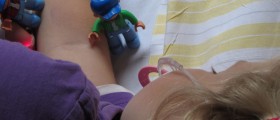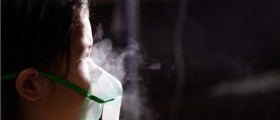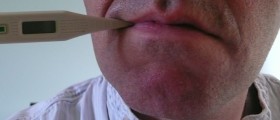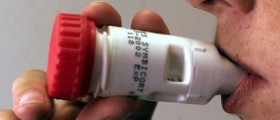
A Common, Dangerous Condition
Pneumonia, even though it strikesadults as well, is far more frequent with the children. In fact, manychildren die from this disease all over the world. Therefore, it isvery important to notice the symptoms of pneumonia timely and provideyour child and yourself adequate treatment. Basically, pneumoniastands for lung inflammation. It can affect one or both of our lungsand it is often caused by bacterial, viral or fungal infections. Thus, many respiratory infections of this type may, and often do,transfer onto one's lungs, triggering this condition. Also, exposureto certain chemicals, or a direct injury may both cause pneumonia aswell. Since children are the most endangered group, timely treatmentis crucial for successful curing of this condition.
Manifestations of Pneumonia in Children
Most often, pneumonia in childrenevolves from a cold or flu. Therefore, it goes unnoticed, since itbears the same symptoms as these, previous illnesses. However, itmainly manifests itself through dry cough, breathing difficulties and aserious fever. The dry cough is known to trigger chest pain or evenvomiting in children. As far as other symptoms are concerned, sorethroat, loss of appetite, headaches, tiredness and many others mayall be signs of pneumonia, especially if combined. Nevertheless, insome cases, children may not show any of the symptoms mentionedabove, or just a few. Regardless, upon noticing any changes of thistype, seek medical opinion.
Different Child-Different Symptoms
Since this condition may be caused bydifferent factors, it is also expressed differently and affects eachchild in a specific way. For these reasons, a universal set ofsymptoms does not exist. Rather, bacterial pneumonia is known totrigger high fever and respiratory problems, viral often goes onwithout any major manifestations while fungal strikes one withheadaches and and sore throat. The latter may even causeconjunctivitis in small children, if caused by chlamydia.
All in all, taking into considerationall the characteristics of this disease, it is important to takeaction as soon as any signs take place. Pneumonia is both ruled outand diagnosed by X-ray scans and blood tests, even though there areother methods for these purposes as well. Depending on the cause ofpneumonia, its severity, the child's age and medical condition alongwith some other things, the treatment may vary as well. Usually, itinvolves resting and taking antibiotics or some other medicationsduring the recovery period.

















Your thoughts on this
Loading...